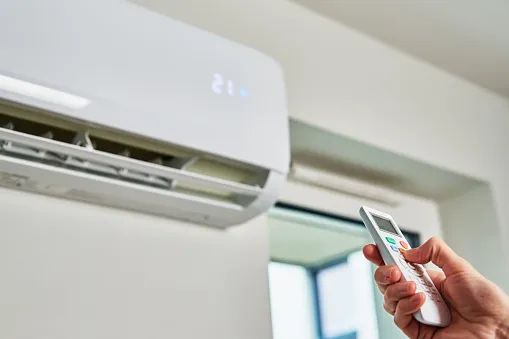The air conditioning (AC) market has witnessed substantial growth and evolution in recent years, driven by increasing global temperatures, urbanization trends, and advancements in technology. In 2023, the market recorded an impressive 138.73 million units in sales. Looking ahead, the market is projected to grow at a compound annual growth rate (CAGR) of 5.1% from 2024 to 2032, reaching a forecasted value of 217.07 million units by the end of the forecast period. This growth trajectory underscores the vital role of air conditioning systems in maintaining comfortable indoor environments, enhancing productivity, and improving quality of life for millions worldwide.
Market Drivers and Trends
Several key factors are driving the growth of the AC market. Firstly, rising global temperatures due to climate change have heightened the demand for cooling solutions, particularly in regions experiencing hotter summers. Urbanization and population growth are also contributing factors, as more people migrate to cities where AC systems are essential for residential, commercial, and industrial buildings. Additionally, technological advancements in energy efficiency, smart home integration, and eco-friendly refrigerants are influencing consumer preferences and industry innovations.
Technological Advancements
The AC industry continues to innovate with technologies aimed at improving energy efficiency and user comfort. Energy-efficient models, such as inverter technology and variable refrigerant flow (VRF) systems, are gaining popularity due to their ability to adjust cooling capacity based on demand, reducing energy consumption and operational costs. Smart AC systems equipped with IoT connectivity allow users to remotely control temperature settings, monitor energy usage, and optimize performance through mobile applications, enhancing convenience and sustainability.
Environmental Considerations and Regulatory Frameworks
Environmental sustainability is a growing priority within the AC market. The phase-out of ozone-depleting refrigerants like R-22 and the adoption of alternatives such as R-410A and R-32 reflect industry efforts to comply with global regulations and reduce greenhouse gas emissions. Manufacturers are increasingly focusing on developing AC systems with lower global warming potential (GWP) and improving end-of-life recycling practices to minimize environmental impact throughout the product lifecycle.
Market Segmentation and Regional Insights
The AC market exhibits diverse segmentation based on product type (split, window, centralized), application (residential, commercial, industrial), and geographic regions. Emerging markets in Asia-Pacific and Latin America are witnessing rapid urbanization and infrastructure development, driving demand for AC systems. Developed regions like North America and Europe are characterized by high replacement rates and growing adoption of energy-efficient HVAC solutions, influenced by stringent energy efficiency regulations and consumer preferences for sustainable products.
Challenges and Opportunities
Despite growth opportunities, the AC market faces challenges such as price volatility of raw materials, supply chain disruptions, and regulatory complexities across different regions. Manufacturers and suppliers must navigate these challenges while capitalizing on opportunities in smart technology integration, service-oriented business models, and expanding market penetration in underserved regions. Investments in research and development, along with strategic partnerships and mergers, are essential for sustaining competitive advantage and driving innovation within the industry.
Consumer Preferences and Design Trends
Consumer preferences in the AC market are evolving towards sleek, compact designs that blend seamlessly with modern interior aesthetics. Energy-efficient models with quieter operation and customizable features such as programmable timers and sleep modes are in high demand. Smart technologies that enable voice control and integration with home automation systems are becoming increasingly popular, appealing to tech-savvy consumers seeking convenience and connectivity.
Impact of Pandemic and Remote Work Trends
The COVID-19 pandemic has influenced AC market dynamics, with heightened awareness of indoor air quality and ventilation in residential and commercial spaces. As remote work and hybrid office models become more prevalent, there is a growing emphasis on HVAC systems that support healthy indoor environments. Demand for air purifiers and HVAC upgrades with enhanced filtration capabilities has surged, reflecting increased investments in indoor health and safety measures.
Commercial and Industrial Applications
The AC market encompasses a wide range of applications beyond residential settings. In commercial buildings, efficient HVAC systems are essential for maintaining comfortable conditions in offices, retail spaces, hotels, and healthcare facilities. Industrial applications, such as data centers, manufacturing plants, and warehouses, rely on specialized cooling solutions to optimize operational efficiency and protect equipment from overheating, ensuring continuous productivity and reliability.


Leave a comment
Your email address will not be published. Required fields are marked *